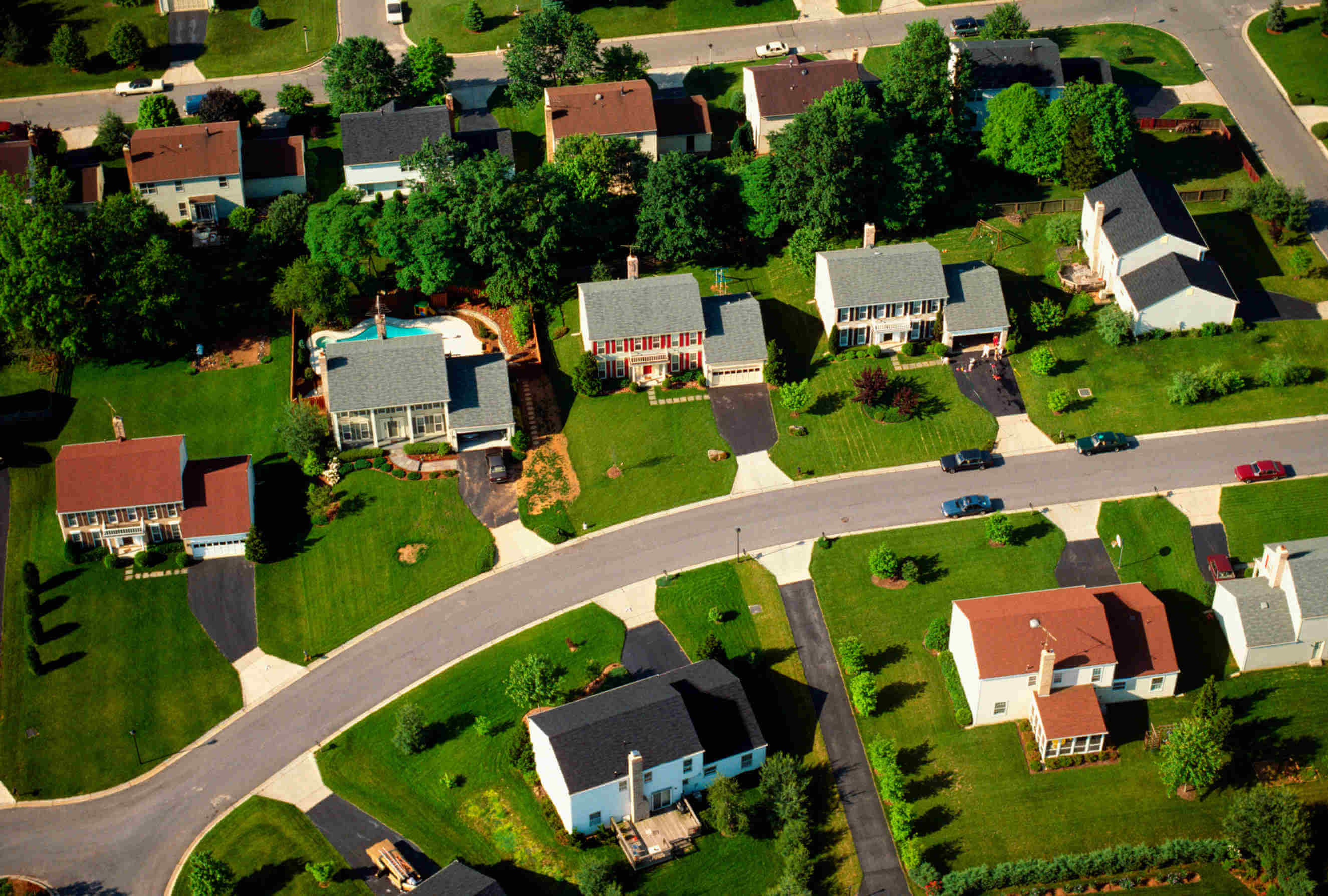Defined Regions
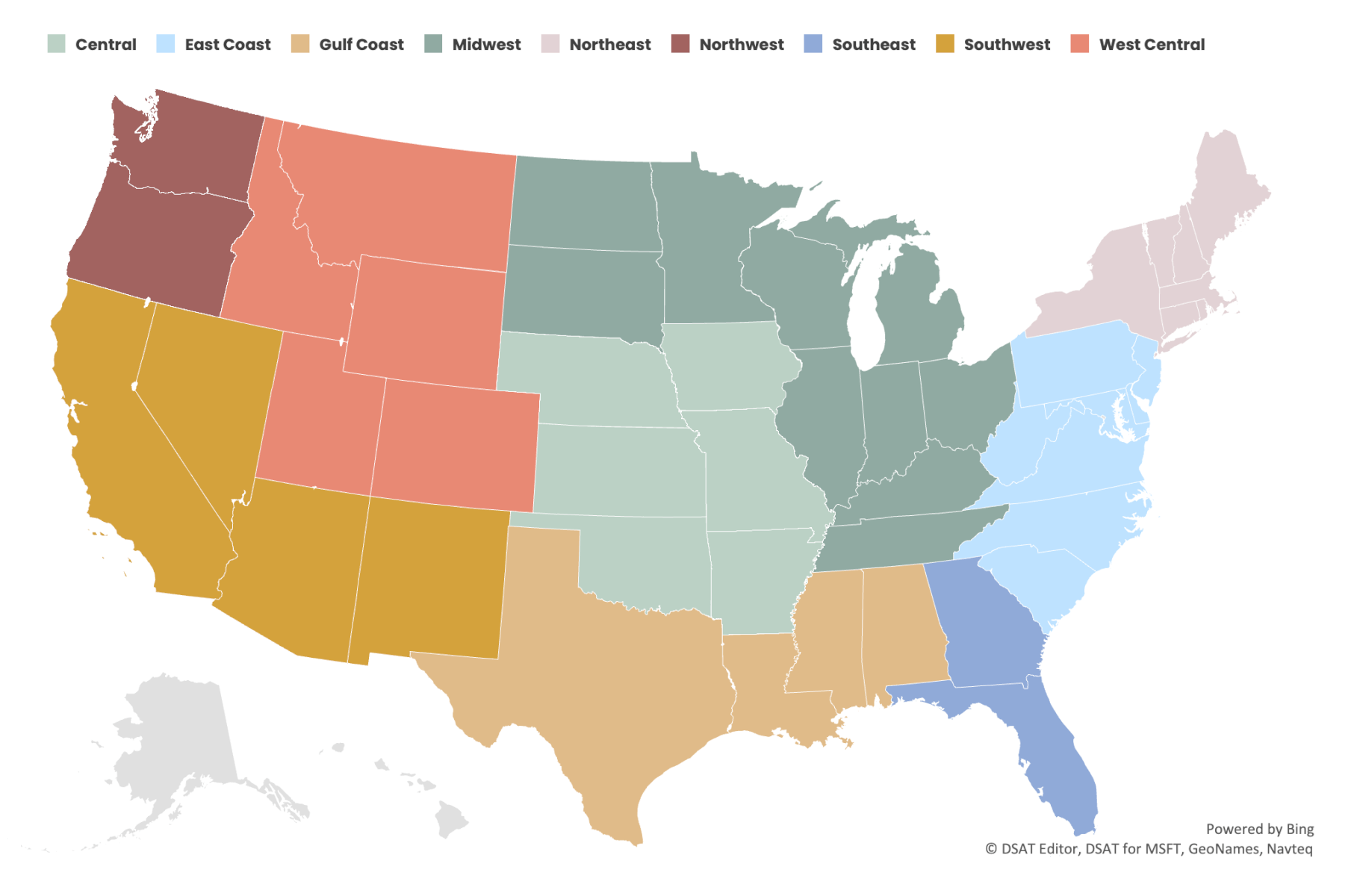
CoreLogic® curates this monthly bulletin of regional construction cost insights, which are reflected in the CoreLogic Claims Pricing database. We combine the current month’s pricing data with four common loss scenarios to create models illustrating market impacts across nine regions, which are compared month over month and year over year.
Our experts provide detailed analyses of changes and trends to provide additional insight into key drivers. View our Construction Database Pricing Methodology whitepaper to gain additional insight into how we populate cost values.
July Pricing Insights
With storm and hurricane seasons in full swing, CoreLogic’s Pricing Analysis & Delivery Team will be watching for post-catastrophe factors affecting material and labor pricing, both regionally and nationally. The pricing database is refreshed monthly, based on market surveys and valued feedback from customer focus groups.
We invite you to contribute to our pricing team’s real-time data collection of labor rates.
Report Highlights
Material
The downward trend of lumber-based components, fencing, framing, and rough carpentry, continues this month and is discussed in more detail in the fire/lightning loss scenario.
- Siding is another material that displayed a downward trend over the past month. Siding decreased an average of -1.8% across all regions. The Midwest and the Northwest both saw a -2.5% decrease, and the Southeast and West Central regions saw a -2% decrease month over month. Since July 2022, siding has decreased an average -6.7% across all regions. Many regions, including the Midwest, Northwest, Southeast, and West Central, exceeded the yearly average decrease, declining -8.2, – 8.1%, -7.9%, and -7.1%, respectively.
- Conversely, other material categories saw average increases compared to last year. Paint rose by 7%, plumbing grew by 2.7%, and electrical increased by 1.8%. These material categories had minimal monthly gains, increasing on average by less than 1% for all regions this month.
Labor
Beginning in the July 2023 Pricing Database, CoreLogic is updating the labor cost formula to include a factor for overtime. This factor will be included in the “wage rate” component of the labor formula. For most trades, this formula update will result in a labor increase of 4% over current rates. This change is designed to adjust the worker’s base rate costs incurred by an employer and does not reflect how or if an employer pays overtime. Please refer to the Construction Pricing Database Methodology Whitepaper for additional information on this change.
Labor rates compared to July 2022 are higher across all regions and all trades. The Northwest and West Central regions stand out for higher-than-average labor rates for drywall, plaster, insulation, and water mitigation. In addition, increases have occurred across all regions and all trades this month.
Property Claim Scenarios
CoreLogic has replicated the estimating components found in the following most common loss scenarios to demonstrate how changes in pricing impact typical loss costs.
Fire/Lightning (Large Loss) Insights: 12-Month Trend
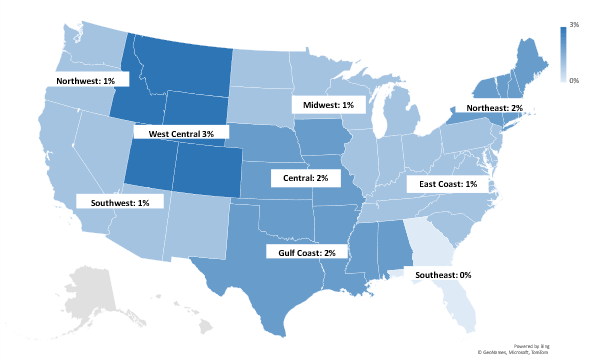
Fire/Lightning (Large Loss)
In this category, large loss claims are modeled from a typical fire loss where all components of a home’s construction are affected. Losses typically exceed $100,000.
- Looking back to July 2022, fire/large loss scenarios for all regions is either on par or just below 2022 pricing.
- Many large loss labor components are rising monthly and remain elevated over 2022 pricing, fueled by continued skilled worker shortages nationwide. Continuing the trend mentioned in prior bulletins, nationwide labor rates associated with drywall, plaster, and insulation work rose on average by 12.3%, 12.1%, and 12.3%, respectively from July 2022. The Northwest and West Central regions are +1% higher than those labor rate averages.
- Counteracting the labor increases and stabilizing this loss scenario are significant decreases in many lumber-related material components. Framing and rough carpentry are down by -38.3%, and cabinetry and finish carpentry are -7.5% and -2.4% lower than July 2022 pricing.
Wind/Hail (Exterior/Roof) Insights: 12-Month Trend
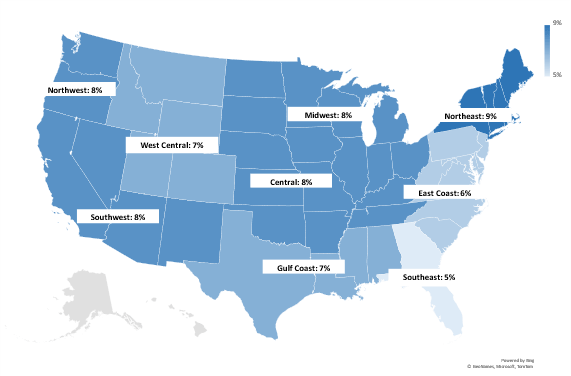
Wind/Hail (Exterior/Roof)
This category represents losses due to wind and/or hail weather activity. Restoration from this damage requires roof replacement, partial siding replacement, and accompanying accessories.
- Wind and hail loss scenario pricing has increased on average 2.2% month over month for all regions.
- Pricing increases are driven by the roofing and siding labor component, which increased this month at a 3.1% and 4.4% average, respectively. Roofing and window material pricing changes were negligible, and siding materials decreased by -1.8%, helping offset labor increases.
- According to CoreLogic Weather Verification Services, severe storms in mid-June impacted several parts of the U.S. It is estimated that over 2.9 million homes in Florida, Missouri, and Georgia were affected by straight-line winds over 60 mph. During this same time, hail exceeding one-inch diameters may have affected more than one million homes in Texas, Arkansas, and Oklahoma. The CoreLogic Pricing Data Team will assess post-loss amplification factors to determine if pricing adjustments are warranted.
Water (Interior Reconstruction) Insights: 12-Month Trend
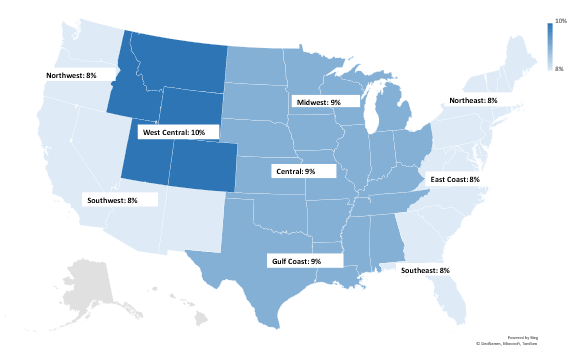
Water (Interior Reconstruction)
Moderately complex losses are modeled for the interior water loss scenario using the bathroom as the origin of loss where a combination of replacement and repair of common household finishes is required.
- Like the wind/hail scenario, there has been little movement in the interior reconstruction loss scenario compared to last month. Labor rates remained consistent month over month; however, it is worth noting that this scenario is up by 5.5% when compared to 2022.
- While labor rates for all categories have increased over the past month, plumbers, painters, electricians, and carpenters are the biggest contributors, with rates remaining inflated over a year ago. Plumber rates increased by 9.3%, painter rates rose 8%, electrician rates jumped 7%, and carpenter rates increased 6.1% over July 2022 levels.
- Paint, electrical, and plumbing material costs have also increased compared with July 2022 pricing. Compared to last year, paint is up 7%, plumbing 2.7%, and electrical materials 1.8%. Decreases in lumber-based materials play a significant role in keeping the interior reconstruction costs from breaching double-digit increases over 2022 pricing.
Water Mitigation (Drying) Insights: 12-Month Trend
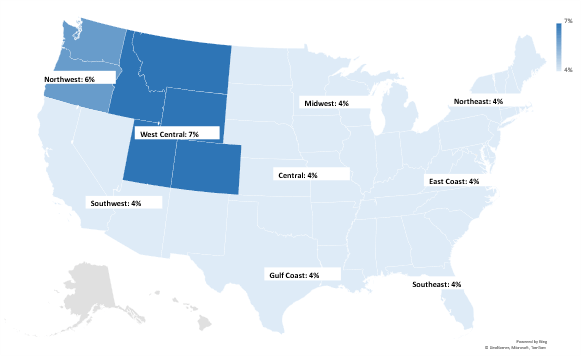
Water Mitigation (Drying)
Typical drying costs for a residential structure include water extraction, wet material removal, and drying equipment use.
- When compared to all other loss scenarios, the water mitigation loss scenario experienced the largest month-over-month increase, rising 4.6% above July 2022 pricing.
- After a long plateau beginning in August 2022, water remediation technician rates have increased. Last month, rates climbed by 4.4% across all regions except the Northwest and West Central, which increased by 5.5% and 6.1%, respectively. While most regions are averaging rates that are 5.3% higher than July 2022, there are outliers, such as the Northwest where rates rose 7.6% and the West Central region where rates jumped 8.4%.
About CoreLogic Data Research
CoreLogic develops this report using up-to-date materials and labor costs. CoreLogic’s team of analysts continuously researches hard costs such as labor, material, and equipment – including mark-ups. CoreLogic updates its database every month accordingly.
Our research also covers soft costs such as taxes and fringe benefits for reconstruction work performed as part of the insurance industry. CoreLogic monitors demographics and econometric statistics, government indicators, and localization requirements, including market trends from thousands of unique economies throughout the United States.
Other factors in this process include the following:
- Wage rates for more than 85 union and non-union trades
- Over 100,000 construction data points
- Productivity rates and crew sizes
- Building code requirements and localized cost variables
Additionally, we validate cost data by analyzing field inspection records, contractor estimates, phone surveys, and both partial and complete loss claim information.
Please complete the online form to provide feedback or request information on any items in our construction database. Please contact your sales executive or account manager for additional explanations or questions. A more detailed methodology explanation can be found in our Construction Database Pricing Methodology Whitepaper.
About CoreLogic
CoreLogic is a leading global property information, analytics and data-enabled solutions provider. The company’s combined data from public, contributory and proprietary sources includes over 4.5 billion records spanning more than 50 years, providing detailed coverage of property, mortgages and other encumbrances, consumer credit, tenancy, location, hazard risk and related performance information. The markets CoreLogic serves include real estate and mortgage finance, insurance, capital markets, and the public sector. CoreLogic delivers value to clients through unique data, analytics, workflow technology, advisory and managed services. Clients rely on CoreLogic to help identify and manage growth opportunities, improve performance and mitigate risk. Headquartered in Irvine, Calif., CoreLogic operates in North America, Western Europe and Asia Pacific. For more information, please visit www.corelogic.com.
NOTE: The building material, labor, and other cost information in this bulletin is generated using research, sources, and methods current as of the date of this bulletin and is intended only to provide an estimated average of reconstruction cost trends in the specified general geographic regions of the United States. This cost information may vary further when adjusting claim values for specific property locations or specific business conditions.

